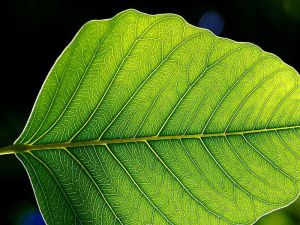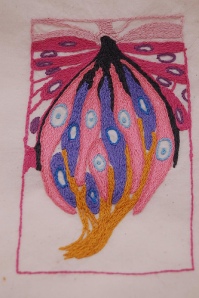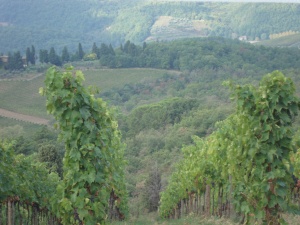
The steepness of some of some of the vineyards
As I said in the last post, after returning from 8 hours of harvesting, I was suddenly invigorated with new energy upon seeing Jurij workng in the cellar. I asked him if I could help and he put me immediately to work.
Ill admit I was a little nervous about working at first, I mean I didnt want to mess anything up, but Jurij seemed to have no qualms about letting me take part in the process. When he explained to me the first job I had to do, I wasnt exactly sure what he expected. I mean he didnt even show me what to do or how to do it. He pointed to the vat of new wine and said, ” Cuando arriva il vino, fai cosi.”, as he made a shoveling motion with his hands.
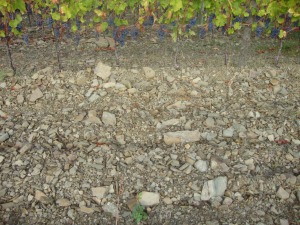
The rocky soil
For those that dont know Italian this means, “When the wine arrives, go like this.” To give you a reference he was in process of pumping the recently destemmed grapes into the stainless steel vat. Here’s a picture of the vat and the ladder. The vat was pretty full at this point and the must coming from the hose can get clogged, so my job was to shovel away the arriving must so the pump would not not get backed up. So I climbed on the ladder and all of a sudden the must starting to come pretty fast. I began to shovel away some of it, but it is harder than it sounds. First of all the instrument I was given looked like a plunger but instead of a rubber piece it was plastic, clearly not good for shoveling or scraping away semi-crushed grapes. This was not the best instrument I could have used, but I quickly learned how to use it efficiently. I was also not in a strategically useful position to use leverage, so this added to the difficulty. This process of shoveling and moving the hose lasted for about 5-6 minutes, which seemed pretty long at the time. Anyway it was a great experience for me, and from that point on I become the must shoveler.
What I found interesting about shoveling different vats was that each had their own consistency. Some were loaded with a high ratio of pulp to juice and some were the complete opposite. The former were more difficult to shovel while the latter pretty easy. It was also clear that juice in the vats with the high percentage of pulp were darker in color. All of the vats I shoveled were Sangiovese, so the discrepancy was not due to grape variety, but due to the terroir.
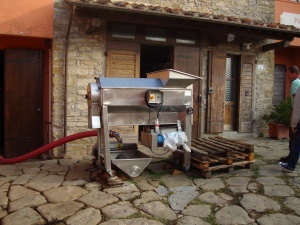 Jurij is a staunch believer in that great wine comes from the grapes, not from the technology that you have. While technology can make your life easier, it doesn’t add anything to the grapes that isn’t already there. For instance his crusher/destemmer was bought in 1996 and is still working like a champion to this day. As you can see from the picture, he uses wooden wedges to keep the machine in place and he stands on some old palettes so he can pour the grapes into the destemmer. Now that’s classy.
Jurij is a staunch believer in that great wine comes from the grapes, not from the technology that you have. While technology can make your life easier, it doesn’t add anything to the grapes that isn’t already there. For instance his crusher/destemmer was bought in 1996 and is still working like a champion to this day. As you can see from the picture, he uses wooden wedges to keep the machine in place and he stands on some old palettes so he can pour the grapes into the destemmer. Now that’s classy.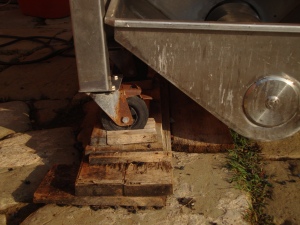
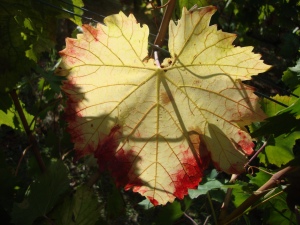
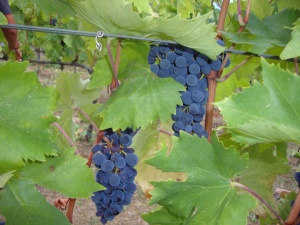
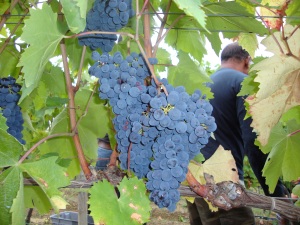
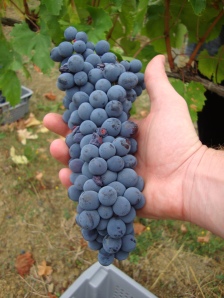
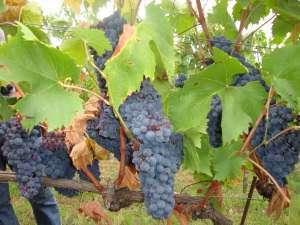
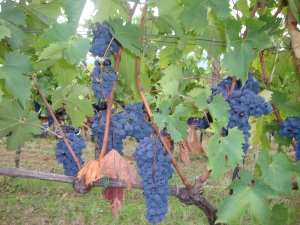
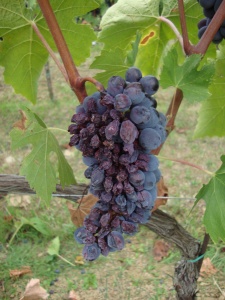
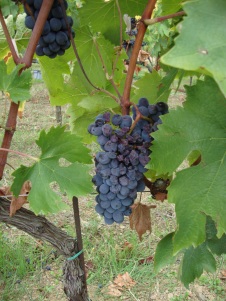
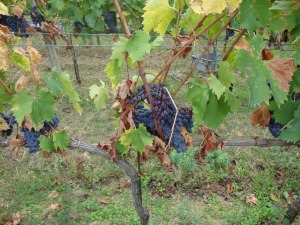
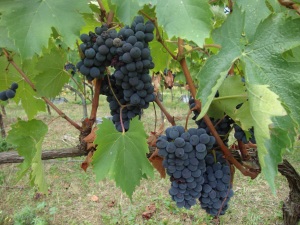
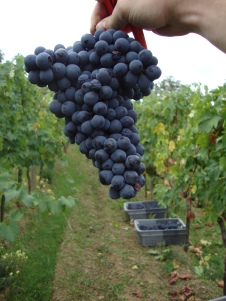
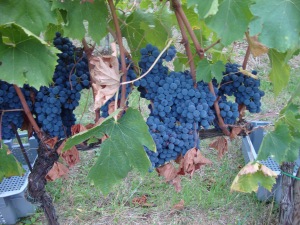
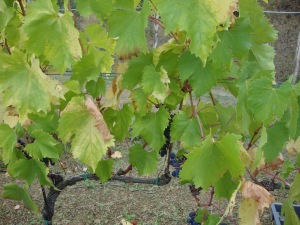
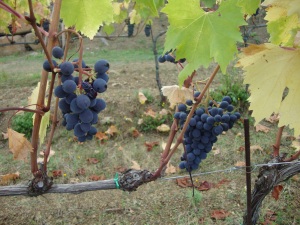
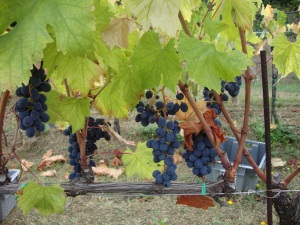


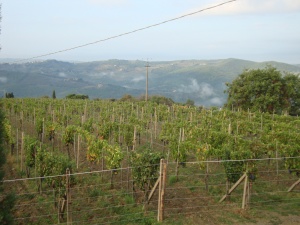
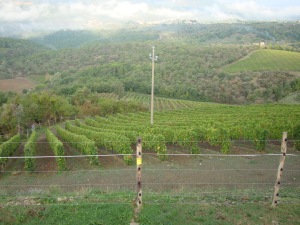 humble, passionate, gentle, funny and sincere person I have ever met. Just being in his presence made me a better and smarter person. He is the type of guy that would just explain what he is doing without you having to ask. As long as he sees that you care and are passionate he will go to extraordinary lengths to give you everything he can.
humble, passionate, gentle, funny and sincere person I have ever met. Just being in his presence made me a better and smarter person. He is the type of guy that would just explain what he is doing without you having to ask. As long as he sees that you care and are passionate he will go to extraordinary lengths to give you everything he can.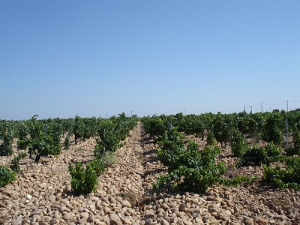
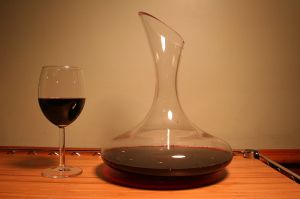 In my earlier days of “wine-ing” and dining it seemed fashionable, trendy and cool to let wine breathe in a decanter for a couple of hours. I read about it in virtually every wine periodical and most deemed it a necessary process in order to fully enjoy a wine, whether young or old. For new wines, decanting and breathing is meant to soften and loosen the aromas in tightly wound, young, and tannic wines. In older wines, decanting is a legitimate way to separate the clear wine from the precipitated sediment as well as to let the wine “breathe” from all of those years trapped inside the bottle.
In my earlier days of “wine-ing” and dining it seemed fashionable, trendy and cool to let wine breathe in a decanter for a couple of hours. I read about it in virtually every wine periodical and most deemed it a necessary process in order to fully enjoy a wine, whether young or old. For new wines, decanting and breathing is meant to soften and loosen the aromas in tightly wound, young, and tannic wines. In older wines, decanting is a legitimate way to separate the clear wine from the precipitated sediment as well as to let the wine “breathe” from all of those years trapped inside the bottle.
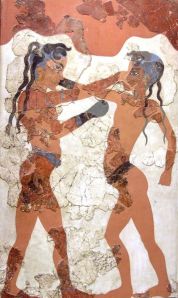
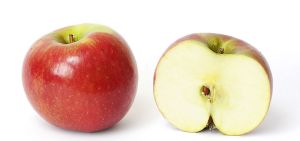 Most people think that a comparison between apples and oranges is unfair, I but would like to argue this point. Ask yourself this question, “Which is better a Bordeaux or a Muscadet from Nantais?” We constantly see first growth Bordeauxs getting scores of 100, but why don’t we ever see a Muscadet receiving a score of 100? Scoring systems aim to be as objective as possible, but invariably, they are not! The first growths of Bordeaax are an expression of the finest wines the regions have to offer, so in that respect they should receive a high score, but why can’t the best Muscadet or Cabernet Franc achieve a score of 100 if they are the best their class? Scoring should be expressed in terms of “varietal” or “regional” expression if you will.
Most people think that a comparison between apples and oranges is unfair, I but would like to argue this point. Ask yourself this question, “Which is better a Bordeaux or a Muscadet from Nantais?” We constantly see first growth Bordeauxs getting scores of 100, but why don’t we ever see a Muscadet receiving a score of 100? Scoring systems aim to be as objective as possible, but invariably, they are not! The first growths of Bordeaax are an expression of the finest wines the regions have to offer, so in that respect they should receive a high score, but why can’t the best Muscadet or Cabernet Franc achieve a score of 100 if they are the best their class? Scoring should be expressed in terms of “varietal” or “regional” expression if you will. 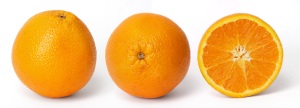
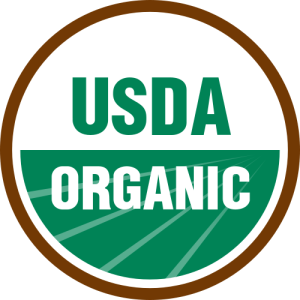 Organic: The word organic literally means, ” of, relating to, or derived from living organisms” or “of, relating to, or containing carbon compounds”. This is not really an entirely descriptive word, however. There are different standards in different countries for what “organic” means, so you don’t really know what your getting. In simplest terms it means that the grapes were farmed without the use of man made chemical pesticides and fertilizers. Wines labeled “organic” are not always sulfite free. Sulfites occur naturally in wine and the addition of sulfites might be allowed under some laws . In America, added sulfites are not allowed if you want your product to be organically made.
Organic: The word organic literally means, ” of, relating to, or derived from living organisms” or “of, relating to, or containing carbon compounds”. This is not really an entirely descriptive word, however. There are different standards in different countries for what “organic” means, so you don’t really know what your getting. In simplest terms it means that the grapes were farmed without the use of man made chemical pesticides and fertilizers. Wines labeled “organic” are not always sulfite free. Sulfites occur naturally in wine and the addition of sulfites might be allowed under some laws . In America, added sulfites are not allowed if you want your product to be organically made.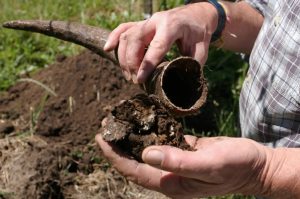





 of 2 years and some for over 20. The quality and balance of tannin can make all of the difference, but be careful. A wine that seems exceedingly tannic is also not good. Like I’ve said in other posts, it is not the strength of one particular characteristic that makes a wine, but how all of these components are meshed together.
of 2 years and some for over 20. The quality and balance of tannin can make all of the difference, but be careful. A wine that seems exceedingly tannic is also not good. Like I’ve said in other posts, it is not the strength of one particular characteristic that makes a wine, but how all of these components are meshed together.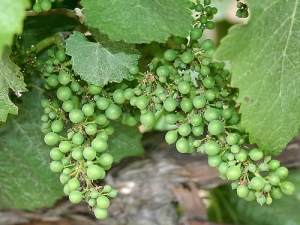 A neat little story before we go. There is a reason for everything that exists in our world, including tannins. Remember that grape vines are wild plants and existed long before humans and WILL continue to exist long after we are gone. Plants have a myriad of biochemical, physical, and evolutionary processes that have helped them survive for this long. One of the main goals of the grape vine is to survive and reproduce. When the fruits of the vine are young they are green, acidic, bitter and very TANNIC. This is to insure that the berries make it to their full ripeness. Would you like to eat something that tasted like that? Well , neither would any animal that also might be hungry. During the maturation of the berry, they change to a beautiful color, become less tannic, sweeter, and less acidic. Now they are ready to be consumed by an array of different animals so that they can eat,digest, and scatter the seeds all over the world.
A neat little story before we go. There is a reason for everything that exists in our world, including tannins. Remember that grape vines are wild plants and existed long before humans and WILL continue to exist long after we are gone. Plants have a myriad of biochemical, physical, and evolutionary processes that have helped them survive for this long. One of the main goals of the grape vine is to survive and reproduce. When the fruits of the vine are young they are green, acidic, bitter and very TANNIC. This is to insure that the berries make it to their full ripeness. Would you like to eat something that tasted like that? Well , neither would any animal that also might be hungry. During the maturation of the berry, they change to a beautiful color, become less tannic, sweeter, and less acidic. Now they are ready to be consumed by an array of different animals so that they can eat,digest, and scatter the seeds all over the world.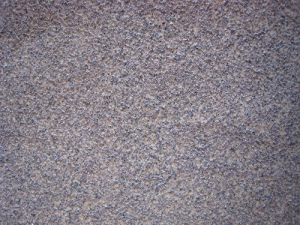
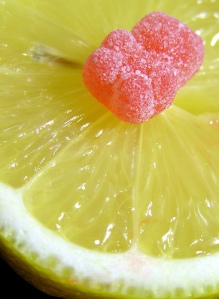
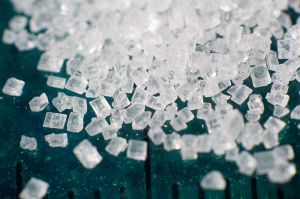 This is the last article that covers the “round” and “smooth” qualities of wine. We just went over
This is the last article that covers the “round” and “smooth” qualities of wine. We just went over 
